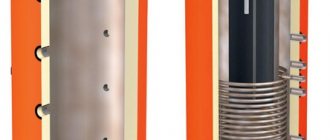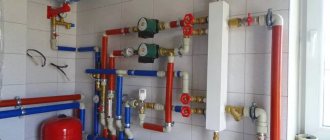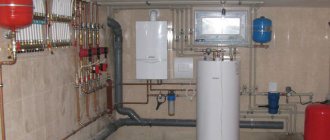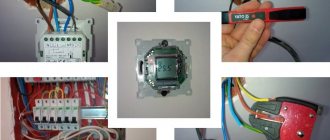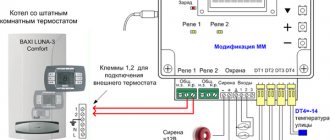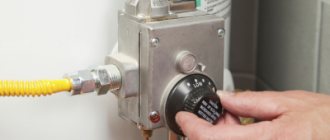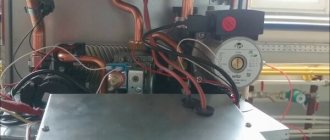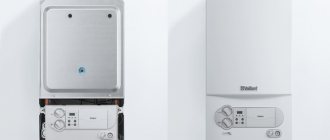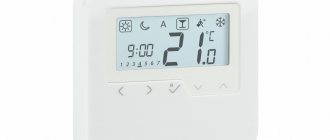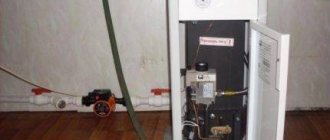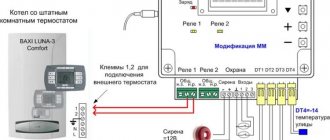The thermostat for a water heater is an important element of the boiler design. The main task of the device is to maintain the specified temperature regime of the heated liquid, and for some models it must be maintained during an emergency shutdown of the electrical appliance in the event of a malfunction. Recommendations regarding the selection and installation of such a device will be discussed in this article.
Purpose
A capillary thermostat is used to control the temperature. Used as a relay in household appliances, industry, to ensure safety in case of fire.
This device can be used as a double-acting thermostat. In the first case, the element can shut down various systems in the event of an increase in temperature. In the second case, he is able to turn off running systems, switching to ensuring the operation of other systems. For example, when the temperature rises, it can turn off appliances, heating elements and turn on the air conditioner or fan to cool the room. Also capable of triggering an alarm in case of fire. This element has many purposes, the main thing is how it is connected to the electrical circuit.
Principle of operation
The operating principle of a capillary thermostat is very simple. First you need to understand what it is and what the device consists of. The element consists of the following parts:
- Capillary flask made of copper or brass.
- Tubes made of the same materials.
- Diaphragm regulator with electrical contacts.
- Gas or liquid in a flask.
A capillary tube thermostat operates using the principle of pressure from an expanding fluid. The sealed flask contains a liquid whose density is less than that of ordinary water. The flask is soldered to a tube, which in turn is attached to a membrane on the mechanical part of the capillary thermostat. When the temperature increases above 3 degrees, the liquid begins to expand, creating pressure on the surface of the adjustable membrane. After overcoming the elasticity value, the membrane is activated, opening the electrical contacts of the regulator. Depending on the settings, the regulator can operate at temperatures from + 3 to +40 degrees. It all depends on where the capillary thermostat is used.
Main types
Heating elements come in different capacities. The more powerful it is, the more intensely the liquid inside is heated. Moreover, the thermostat is exactly the part that is the basis. If you have chosen all the technical characteristics correctly and conscientiously follow all the rules for its operation, the water heater will serve for a long time without unscheduled cleaning. So what are they like?
Rod
It consists of a steel tube of small diameter (up to approximately 10 mm) and length (about 25 to 45 cm), which depends on the volume and power of the heater. This thermostat is placed in the heating element tube and it works according to the elementary laws of physics. As the tube heats up, it expands linearly, allowing the switch to be pressed. However, their main disadvantage is inaccuracy and high cost of use. When hot water leaves the tank, cold water entering cools the thermostat very quickly. For this reason, the boiler heats up more than it actually needs, and this increases electricity costs and shortens the service life of its parts.
Varieties
There are 2 main types of temperature controller. Mechanical devices have manual adjustment of the response temperature. They are among the simplest devices.
There are electronic regulators. They can be adjusted remotely via a computer or Wi-Fi network.
Non-adjustable sensors are increasingly appearing on the market. Such options cannot be configured at the moment of operation; they have a very narrow scope of application.
Scope of application
The capillary thermostat is a very common temperature sensor. It is often used in:
- Household instrument making. The element is installed in air conditioners, furnaces, water heating boilers, washing and dishwashing appliances, and ventilation systems of “Smart” homes.
- In industry, this mechanism is used to control the temperature of gases and liquids. Used for ventilation of rooms. There are devices for monitoring the temperature of electric motors that are operated without human supervision.
- Before the invention of fire and smoke detectors, thermostats with a capillary system were used as temperature controllers in warehouses and unguarded premises.
As mentioned earlier, this mechanism can be included in the electrical circuit of almost any device.
Examination
Despite their simplicity and reliability, capillary thermostats fail. This is due to the following factors:
- Carbon deposits on electrical contacts. Fixing this malfunction is very simple if the mechanism is suitable for disassembly. Carbon deposits are removed by cleaning the contact group with fine sandpaper. As a result of sticking, dents may form on the surface of the contacts. Cleaning is carried out until the surface is completely leveled.
- Loss of membrane elasticity. For collapsible devices, this problem is solved by leveling the surface. For those that cannot be repaired, the defect cannot be eliminated.
- Breakdown of the tube or flask of the capillary system. The only solution is to completely replace the device. In some workshops, the flask is filled with liquid and sealed. But the cost of repair is often higher than the new original.
To determine the operability of an element, you can only check the contact group. Often, regulators for household use are equipped with 3–4 contacts, 2 of which are in the closed (working position), and the next 2 contacts close when the mechanism is activated. To check you need:
- Set the tester to dialing mode with sound notification.
- Connect one probe to the first contact of the element.
- The second one is to find the contact with which the first one is closed. The tester's audio alert will indicate it.
- Next, the flask must be brought to a heating device or open flame without disconnecting the tester probes.
- When the response temperature is reached, the membrane will open the contacts, thereby interrupting the tester's notification.
- Now you need to ring contact 3 of the mechanism. To do this, attach one probe to a contact that has not been tested, and with the second probe find a circuit from the tested terminals. An audible alert will indicate that the circuit is closed and the correct terminal has been found.
Successful testing of all terminals is a sign of complete serviceability of the regulator.
A full check can be carried out in the same way, only with an increase in the trigger moment.
How to do DIY repairs
If possible, the element can be repaired or a new one installed.
How to remove the thermostat:
- Disconnect the equipment from the network.
- Turn off the water supply.
- Drain the contents of the tank. You can use a special valve for this. Why you need a safety valve, read in a separate article.
- Dismantle the heating element. To do this, unscrew the nuts and bolts of the flange and remove it from the housing.
- The thermostat is usually located at or near the base of the heater.
- Disconnect the wiring and remove the sensor from the base.
In the case of a mechanical model, you can clean the bimetallic plates from oxidation . To do this, soak a piece of cloth in alcohol and wipe the plates. If the oxidation has spread greatly, then clean it with fine sandpaper.
You need to do this carefully so as not to touch the sensor contacts.
Due to power surges, the break contact could become stuck. To adjust, carefully remove it from the body and clean the problem area. Normally, the contact should fit into the socket automatically.
How to repair a contact if it does not work:
- Remove the part completely from the housing.
- Clean its surface, as well as the seat.
- If the contact does not turn on after cleaning, place insulating tape underneath.
- Reinstall the stem.
- Assemble the body.
Connection
It is very easy to connect the capillary thermostat yourself. Before starting work, you need to study the electrical circuit diagram on the device body. If it is not there, then you will have to dial the entire contact group. It is worth considering that the connection of any device is carried out strictly from the source of electrical energy consumption, through the thermostat to the device that must work through it. There are 2 schemes for connecting the mechanism.
Direct connection
Below is an example of direct connection of an incandescent lamp through a capillary thermostat. The thermostat will be used as a switch.
- 2 wires are connected to the lamp socket contacts.
- The “1” end of the wire is directly connected to one core of the power source, for example, to the “-” battery.
- End “2” of the wire is connected to output “2” on the regulator terminal block.
- “+” from the power source is supplied to the “1” terminal of the regulator unit.
With this connection diagram, the lamp will light. If you heat the thermostat bulb, the contacts open and the lamp goes out. This connection diagram is used in heating boilers. The water does not have time to boil, the thermostat turns off the boiler when the set temperature is reached, which prevents the formation of steam and high pressure.
Reverse connection
An example of reverse connection with the same incandescent lamp. The thermostat is now used as a switch.
- Connect both ends of the wire to the incandescent lamp socket.
- Connect the “1” end of the wire directly to the “-” terminal of the battery.
- Connect the “2” end to terminal “3” on the thermostat block.
- Apply “+” from the battery to terminal “1” of the thermostat input.
When testing the regulator terminals, it was determined that contacts “1” and “3” are closed when input contacts “1” and “2” are opened. In the assembled circuit, the incandescent lamp does not light because it does not receive electrical energy. When the capillary flask is heated, contact “1” will open, closing the circuit with contact “3”. In this position, voltage is transferred from one terminal to another. The incandescent lamp is now lit. This connection diagram is used in ventilation and air conditioning systems. The appliances do not turn on until the room temperature rises. As soon as the sensor is triggered, the devices turn on to cool the room.
Using the contact group of a capillary thermostat, you can distribute the operating torque of several devices or devices. The main thing is to know the exact circuit for switching on and off the contact group.
In heating boilers, a three-contact thermostat is used to operate the device and an active warning relay. Until it opens, the thermostat works in conjunction with the boiler. After exceeding the response threshold, the contacts open the circuit, turning off the boiler. This closes the secondary contact, turning on the light bulb or warning signal that the operation has stopped.
What is good about a capillary thermostat?
There are some classifications of thermostats, according to which a water heater can be divided into several types. Electromechanical-electronic, which affects the control method. Programmable or simple, which will affect how the temperature is set. Mortise or overhead, which affects the installation method.
Basically, a thermal switch is:
The peculiarity of the rod model is that it is the oldest device. It looks like a small tube, 35 cm long and 1 cm wide. When it is exposed to high temperature, the tube expands in size and pressure is applied to the switch. This is exactly how this system works.
It has its own drawback, and it lies in low accuracy, because the tube cools as quickly as possible, due to which the water heater operates longer than required.
The operating principle of the capillary thermostat is slightly improved, since it appeared after the rod thermostat. The thermostat is a tube with cylinders located inside it. They contain liquid with a density different from water. When heated, the volume of liquid increases, the cylinder begins to put pressure on the membrane and on the shutdown device. In terms of accuracy, this method has a discrepancy of 3 ᵒС.
An electronic type thermal sensor is the most common model and it is the most accurate compared to the others. The perfection of the model lies in the fact that the temperature sensor has direct interaction with the protection relay, due to which an emergency automatic power shutdown is carried out if there is no liquid in the tank.
Installation features
At its core, a capillary temperature controller is a very fragile element. When installing it, the following rules must be observed:
- The capillary flask should be located next to the heated device. If the design provides for a radiator, then directly on the fins of the radiator. If the flask is located in the air duct box, then the location should be strictly along the path of the air flow.
- The flask should be installed with its end down. The liquid will not respond to temperature changes if it flows to the other end of the system.
- Do not bend the capillary tube at a right angle. This will disrupt the effect of fluid pressure on the membrane.
- The length of the tube can only be shortened by bending it into rings.
- For household devices, the length of the tube should not exceed 35 centimeters.
- It is prohibited to impact the membrane with foreign objects.
- If the regulator has an open housing, it is necessary to periodically clean it with a stream of air to remove accumulated dust and insects.
- It is worth taking seriously the connection of the thermostat to the electrical circuit. Poor contact can cause the terminals to melt, heating the membrane. When heated, the metal of the membrane loses its properties, due to which the elasticity coefficient is lost.
- When replacing a faulty element, it is necessary to select its exact analogue. This is especially important for devices that heat water. Deceleration in breaking the electrical circuit can lead to the formation of steam, followed by depressurization of the housing.
Full compliance with the rules of installation and operation of the capillary thermostat will significantly extend its service life.
The most common breakdowns
How to detect and eliminate:
- The water is too hot (this may occur due to the failure of the structure that performs the regulating function)
- Failure in copper capillary tube. This part itself is very sensitive to various types of mechanical damage. Unfortunately, it cannot be repaired, only a new one can be installed.
- The adhesion of the heating element and electrical connectors is insufficient.
- The thermostat turns on and off very often (the reason is excessive scale formation, which exceeds the permissible limit).
- The water is not heated enough, although the power of the heating element is very high (this occurs when the adjustment is incorrect)
- Malfunction of electrical components (most often this is due to voltage fluctuations in the electrical network; you need to install a means that will provide uninterrupted power supply or a voltage stabilizer)
Advantages and disadvantages
A capillary thermostat is an element of many electrical appliances. The main advantages of the device include:
- Simplicity of design and small dimensions.
- High frequency of response to increased temperature.
- Wide range of applications.
- Possibility of connecting several devices at once.
- High reliability when used correctly.
- Relatively low price.
The only disadvantage of this element is its unsuitability for repair. It is impossible to replace melted contacts or a membrane that has lost its elasticity. Thermostats used in industry are large in size. Depending on the design, some models are repairable.
Model overview
Capillary thermostats for domestic use must be reliable, durable, and have a simple connection diagram. Next, a description of the 3 most suitable thermostats for domestic use will be given.
AZT-6
Mechanical thermostat. Main purpose: temperature control of water heaters. The device is equipped only with a knob for adjusting the operating temperature. Operates in modes - 15 + 85 degrees C.
Among the advantages:
- Easy to connect.
- Fast cut-off.
- Miniature appearance.
- Low price.
AZT-6 is an excellent assistant for monitoring air temperature changes in the house.
Ballu BMT-2
Temperature controller for heaters and ventilation systems. Operating range +5–35 °C. The device is used to switch between heating devices and ventilation systems. Has a built-in notification about changing the operating mode. Can be used to connect 4 devices at once into a common system, with their subsequent division according to temperature conditions.
Pros:
- High reliability.
- Ease of Management.
- Multiple connection pairs.
- Not a high price.
The Ballu BMT-2 regulator can be trusted to control the temperature in the house with an electrical load of more than 10 amperes.
Terneo EG
The device is designed to control the temperature in the incubator. The model is completely electronic. Has an additional socket on the body. Working in incubators is not the only purpose of this model. It can be used for work in warehouses and basements.
Pros:
- Easy setup of parameters.
- Easy to read display.
- Availability of sound notification about operation.
- Additional socket.
Terneo EG is very reliable. Through this device, you can connect several devices and set the response temperature for each device.
Checking the thermostat for the boiler for serviceability
Some time after installation, the operating circuit of any heater, be it indirect heating or conventional, may fail. How to check a product's suitability?
It is quite possible to carry out diagnostics without the intervention of a specialist:
- To determine the suitability of the thermostat, it must be removed from the boiler and set to the mode in which the resistance is measured.
- The maximum temperature level is set and the resistance at the input and output contacts of the product is measured. If the device does not respond, then the thermostat is faulty.
- If there was a response, then the knob on the regulator is turned to the minimum level and the resistance is checked again.
- Next, you need to take a lighter and heat the tube in the thermostat with it.
After a few minutes, the relay should automatically operate, opening the circuit. In this case, the resistance value should be directed upward. If this is not the case, then the thermostat is broken and needs to be replaced.

